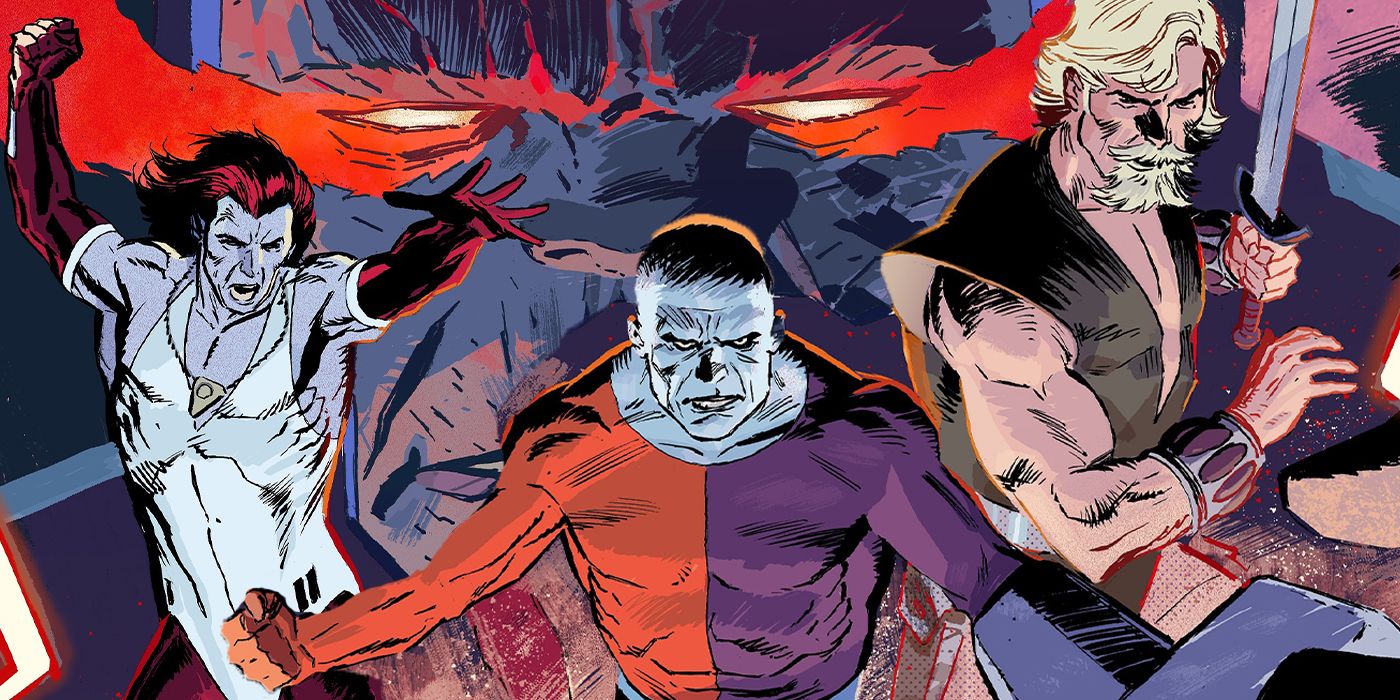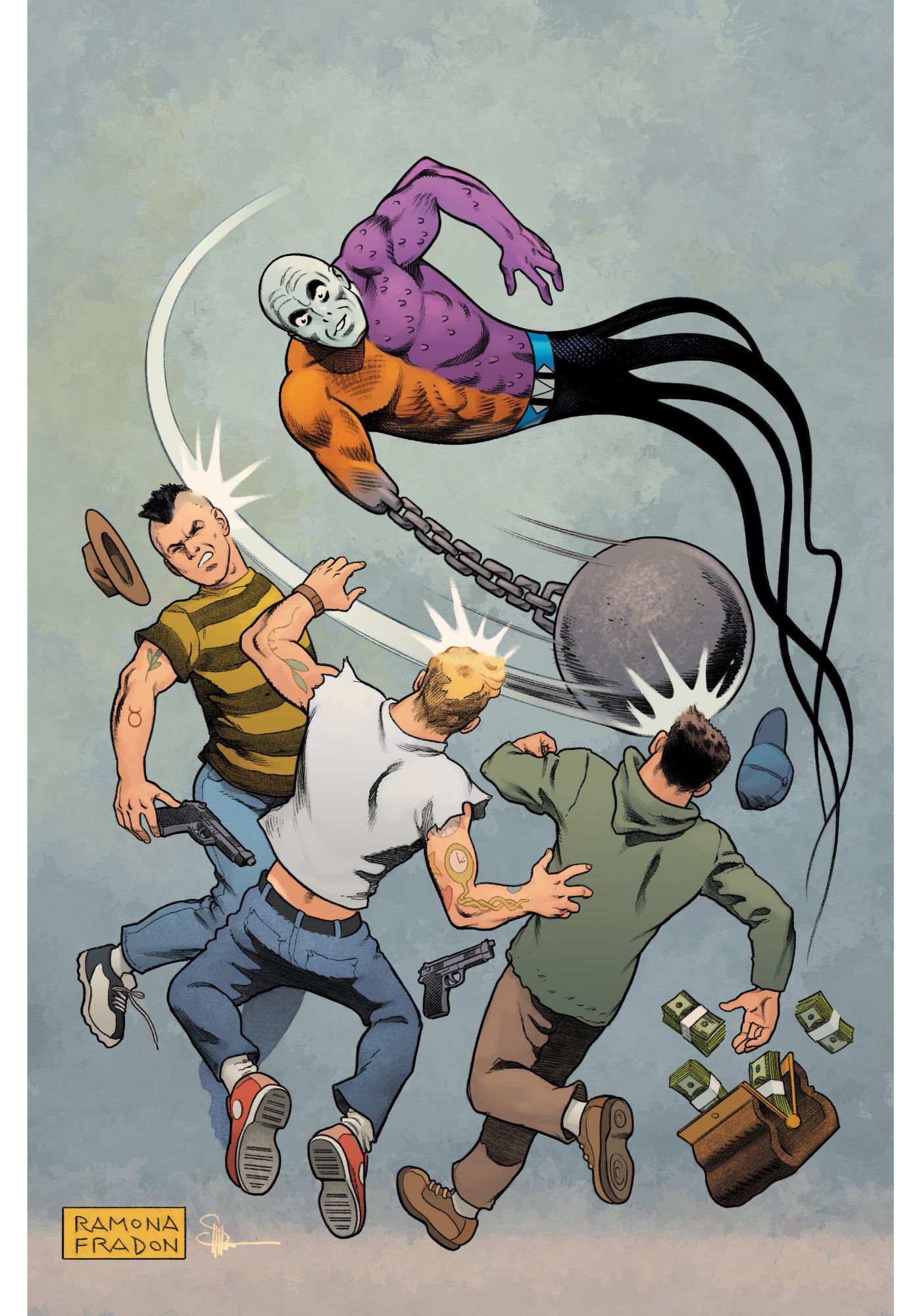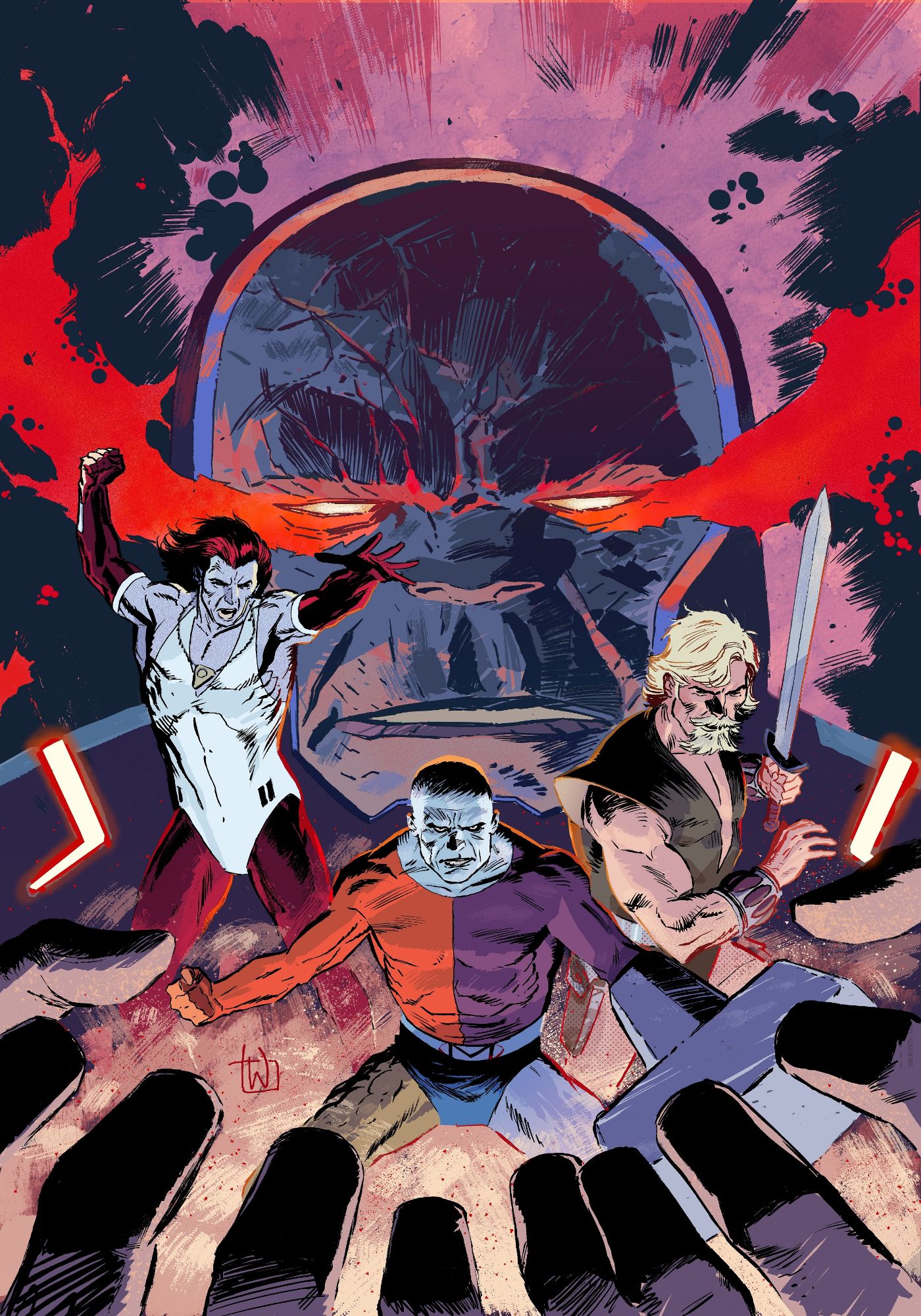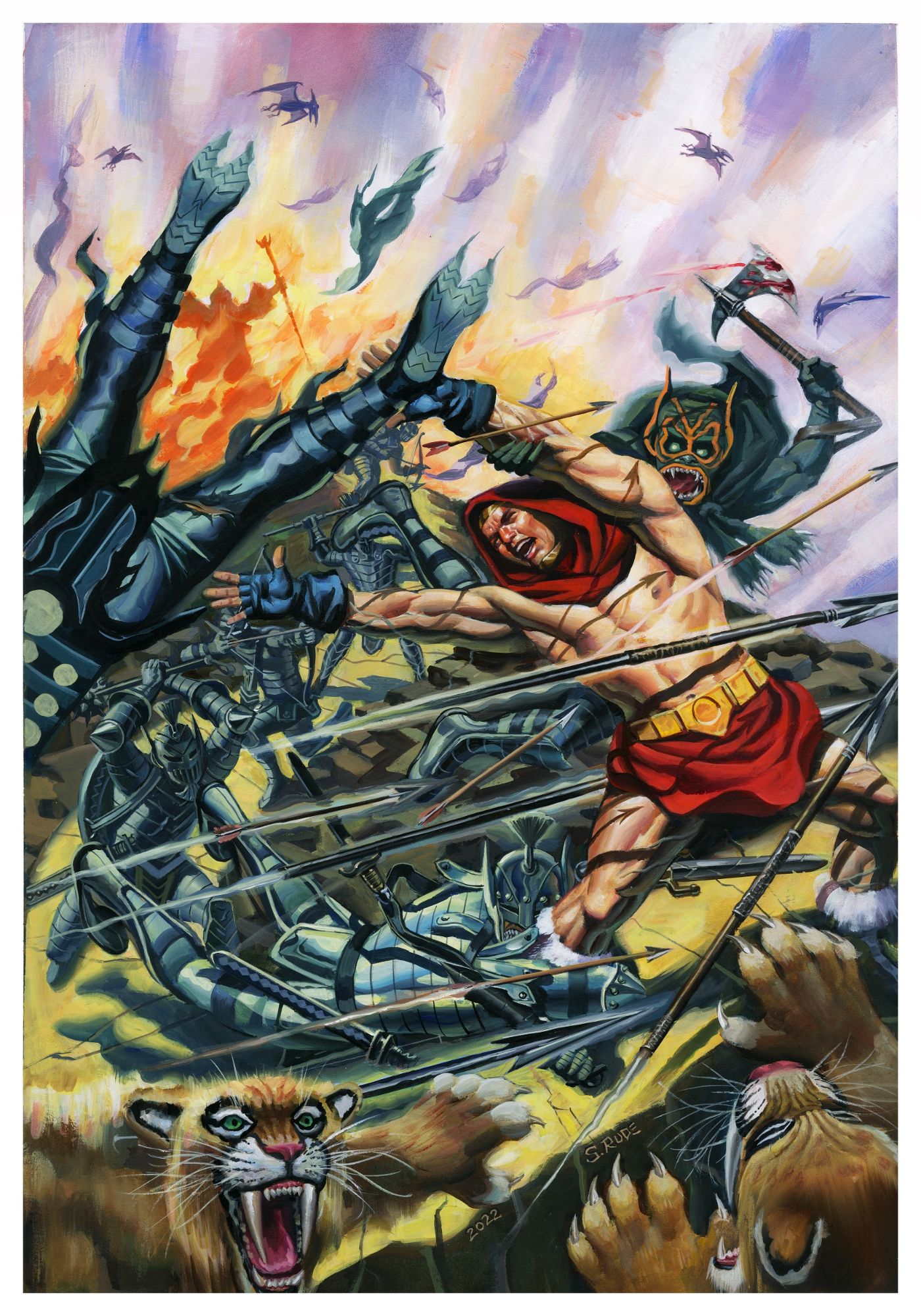Spoilers for Danger Street #1 by DC Comics
The world of the 1970s 1st Issue Special comic is being turned into a connected Danger Street story from Tom King, Jorge Fornes, and Dave Stewart, as the trio will tackle an ambitious new maxiseries for DC Comics. In Danger Street from DC Comics, heroes such as Doctor Fate, Metamorpho, and Lady Cop will star together in the much-anticipated comic book - with the wildly different characters meeting under chaotic circumstances.
The 1st Issue Special anthology from DC Comics was a largely failed attempt from the publisher to launch new series starring both new and old characters. Lasting 13 issues and featuring contributions from comic legends Joe Simon, Jack Kirby, and Steve Ditko, each issue was supposed to act as a launching point for titular heroes in a future comic book series. However, despite a cast of characters featuring Doctor Fate, Metamorpho, Starman, and new heroes such as Atlas, Lady Cop, and the Dingbats of Danger Street, the 1st Issue Special never served its intended purpose, as many characters faded into obscurity... until now.
Screen Rant got the chance to speak to Tom King about Danger Street, a new series combining the worlds of DC's 1st Issue Special into a connected story. We chatted about the eclectic cast of characters, undertaking such a unique story, and how Danger Street came to be.
What is your history with the 1st Issue Special, and what made you want to write a collective story around all of these characters?
Tom King: I'm a fairly deep nerd. I'm a very deep nerd; I'll give myself a little bit of credit. I've been reading comics my whole life, I know comics history, and I know some of the historical figures in comics personally. So, things that are new to me are weird. That's why, when I jumped into this Love Everlasting thing, romance comics being new to me was suddenly very interesting.
When DC Comics put a hardcover of something called 1st Issue Specials in my comps box, and I had never heard of it, I got a little excited. It's like, "What is this? This is something in comics that's new." Anytime you see something in comics that's new, your brain starts to be like, "Can I do something with this?" Because when you read the latest Joker collection, and you're like, "Can I do a Joker story?" Well, every single Joker story and every single Riddler story has been done. Every single Batman story has been done. But not a lot of 1st Issue Special stories have been done, so I got the hardcover and read through it.
It is a collection of everything from comic masterpieces to comic dreck. It goes from the New Gods, which is the most cosmic thing in all of comics history, to the street level of the Dingbats of Danger Street—both Kirby creations. Plus, you have Lady Cop, which is this weird romance thing. It has gods like Atlas in it and superheroes like Doctor Fate, and I was fascinated by it. Our job, or the thing we're all engaged in, is to create a universe where all these characters live. The DC Universe is supposed to be a living thing where everyone exists, but how can anyone possibly suspend their disbelief enough that these characters all exist in the same world?
At the time, Jorge Fornes and I were looking for our next thing to follow Rorschach. And I was like, "Jorge and I can answer that question and build that." How could we answer that question? How could these characters that are just incredibly different; that make no sense together; that should never face or interact with each other come together? Lady Co should never talk to Orion; Non-Fat should never interact with Blue Starman. "Those are not things that should happen, so how can we make a book out of that?" That challenge interested me, because it was new and big. I started going from there, and I immediately started seeing how they could all connect together.
Was there an appeal to get a fresh start with so many of these characters? I know Lady Cop and some other characters appeared sporadically throughout DC history. But there are a lot of them who maybe appeared in a couple of Superman issues and then were never heard from again. What was it like to reintroduce these characters and cut into corners of DC that have been oft-forgotten?
Tom King: Yeah, it's a wide range here. I wouldn't call anyone here an A-list character. Doctor Fate was just in a movie, so maybe he's B or C-list. And there's Metamorpho, another character you've heard of. There's the New Gods, for which I was writing a movie for a while. There are some big, heavy hitters and then more obscure characters. My intention in going forward was just to go back to the original material. I always do that; I always go back to the original, go back to the center, and try to ignore the rest.
The Outsiders are probably the most obscure ones. When you see The Outsiders, everyone thinks Batman and The Outsiders, with Black Lightning and the rest. But this is before that, and these are a bunch of—for lack of a better word—people from a freak show who bonded together as a team. They only appear here, and in the background of a Grant Morrison comic as a joke, that's how obscure they are. The fact that it ran the gauntlet really intrigued me. It was a chance to do what I do and have done before, just like I did with Kite Man or, on some level, Adam Strange. It's a chance to take obscure characters and make them cool, but also to see how those obscure characters interact with bigger heroes like Doctor Fate.
Is there a character from the 13 issues, or a collection of characters, that you enjoyed writing more than you thought you would?
Tom King: It's hard. First of all, I wrote this all together. I had this new way of writing, which I'm now falling away from because I have so many deadlines, where I write them as a novel. I write the comics all at once; all 12 issues at once, for however long it takes. I was done with issue 12 by the time Jorge started issue 1, so I wrote this a year and a half ago, and it's just coming out now. It's hard for me to remember what I was loving and what I wasn't.
There are some characters that surprised me with how cool they were. The Dingbats turned out to be super fun; the interaction between Crunch and Non-Fat and Bananas. Those are such absurd names that even saying them out loud makes me regret that I'm working on this project. But taking them seriously and taking their personality seriously, what Kirby did with them was very cool.
Lady Cop was featured very prominently in this series, and it was an absolute ball to write someone who doesn't really like superheroes. It's fun to write a superhero book and, at the center of it, have someone who doesn't really care for superheroes. And then there are characters like the Creeper, who's kind of a fun guest star in a lot of Batman issues. But to delve more deeply into who he is and what makes him tick was really a blast.
There weren't any I didn't enjoy, but The Outsiders were a little harder because there are so many of them and none of them have personalities. You have to define them very loosely, so they were the hardest of them all, I would say.
When you were constructing the story, how difficult was it to get from the kid millionaires to the New Gods?
Tom King: I was stealing from the TV show Fargo, which I really loved. What they do on that show is have a bunch of diverse characters who don't seem like they interact with each other at all, and then there's some sort of incident where they all become suddenly bonded, and you realize that each one is a domino that leads to the next one. I loved how they did that. And if you steal from the best, that's a good person to steal from. So, that's how I imagined it. I imagined that there were gonna be these characters that did not exist to each other. Or maybe they heard of each other, and maybe they've done this or that.
The first thing I came up was Lady Cop. Lady Cop is the stupidest name of anyone ever, so I was like, "Why would she be called Lady Cop? That's something a stupid teenage kid would yell at her." Well, I have a group of 4 stupid teenage kids, and they're called the Dingbats. That's another stupid name. Why would anybody be called the Dingbats? That's something a tight-ass cop would yell at someone. So, she's calling them Dingbats, and they're calling her Lady Cop. Now, they have names and we're off to the races. I immediately saw the Green Team. They're billionaire teenagers, and that's a horribly evil thing. These people have so much money that they're above the law, and they have the minds of edgelords. It's a frightening thought. It has nothing to do with our current situation, I'm sure.
I had them, and I was like, "What if somebody works for them?" It probably took 10 minutes to come together, and I was like, "Okay, now I see all the connections between them." It was not difficult at all. Once I saw that, each of them had a string that attached to the other one. All I had to do was light a fire to the string and see the fire spread throughout the whole thing.
What was it like revisiting the New Gods?
Tom King: I made sure everybody's mentioned in the first one. Some are mentioned less than others, but the New Gods are mentioned because they're looking for Darkseid. How that went wrong and why Atlas arrived has huge consequences for Darkseid, Highfather, and Orion.
It was good. My rule from the beginning was that I wasn't going to do Scott and Barda, so don't expect them. I feel like I've said all I can say about those characters. It was an exploration of Darkseid, but a different Darkseid than we have seen. Darkseid was an utter force of nature in Mister Miracle; he's not even a character. He's this power that exists rather than a person.
I was honoring Don Newton and Gerry Conway's New Gods, which is the idea that these gods are also superheroes, and that's why they were in superhero costumes. These are much less forces of nature as they are in Mister Miracle, where they're just metaphors for our life. These are actual characters who have to deal with problems. But it was interesting returning to them. Kirby created almost the perfect storytelling mechanism in the New Gods, and there are just infinite stories you can tell.
What was it like getting a chance to explore other Kirby characters as well? Some of his stories are pretty out there.
Tom King: That's why 1st Issue Special exists in some ways. There are different stories behind how 1st Issue Special got made, but one of the contributing factors was that Kirby had left DC to go back to Marvel and do Black Panther and Captain America. While he was at DC, he was his own editor. Nobody was giving him deadlines or ideas; he would just turn stuff in. He had turned in a few projects that nobody wanted to publish, and they were literally sitting on the shelf, when he left. They just wanted to publish them somewhere, so some of these projects, like the Dingbats and Atlas, are just projects that he left behind. "We have this eight-page Kirby story. Shove it in something, we'll publish it just to make some money off it. We already paid him four years ago." That Kirby-ness penetrates all this stuff.
It's wonderful going back to it. And one of the things that makes it possible is that it was the mid-70s, and Kirby was always lightyears ahead of his time. He was thinking about diversity and reflecting on the world we see in the comics we're reading, so he created a team that has an Asian character and has a Black character. That made this possible, because if this was 24 characters who were all white straight people, it wouldn't be a comic I want to write or anybody would want to read. The fact was that Kirby was 50 years ago ahead of his time and saying, "we need to update comics. Let's start being reflective in this now."
The actual central story has a really interesting combination of Metamorpho, Starman, and Warlord. What can you say about writing those characters, but specifically their plan? It's one of the most insane missions to try to get the respect of the Justice League that I've ever seen.
Tom King: As soon as I start writing those characters, my brain modulates to Bull Durham, that old Kevin Costner movie. There's a famous scene where one of the kids asks him, "You've been in the show?" And he tells him about the one week he spent in the major leagues, and how awesome it was. They're all kind of sitting there, like, "Man, I can't wait to do that."
As an old fan of the substitutes of Legion of Superheroes, I've always related to those superheroes who want to get onto the team but can't quite. I had these three characters who were sub-Justice League-level characters, and I was like, "I wonder if they ever want to get into the big show and why? And if they did, what would they do?" They go find someone who had been once and could show him how to do it, and they'd have that conversation. "But how would they prove themselves to the Justice League?" They'd find some really big thing to show that they were cooler than the Justice League. "And how do you show you're cooler than the Justice League?" You defeat an enemy that Justice League can't defeat! So, they decide to go to Darkseid, and that is a terrible idea. But that's probably why they're not Justice League. The reason you're not in the major leagues is you can't hit that curveball. There's a reason you're not there. That appealed to me immediately.
How was it to continue the language and tone of the original comic? I especially noticed you writing about Creeper being an ogre. Was it important to have it tinged with the original tone?
Tom King: The Creeper was Steve Ditko starting to fall into Ayn Rand hole that he fell into for the rest of his life. Ditko is one of the greatest geniuses that ever entered our industry, both in terms of his writing and his art. But as everyone knows and as I wrote about in Rorschach, he was obsessed with this sort of Randian philosophy. It's kind of the ultimate right wing; there's a right answer and a wrong answer, and the people who are right have the duty to punish the people who are wrong. I'm utterly opposed to that. I'm the kind of guy who thinks the world is very gray, and that thinking there's a right and wrong answer sort of leads to kind of fascism. But he set up the Creeper as his first step to that.
The Creeper was a news host, just like he is here. And he gets fired because he goes on the air and rants that the corrupt Mayor won't prosecute the evil criminals as hard as they should be prosecuted. I build from that, and I turn him into what I think a person like that would represent today. I bring that forward 50 years to what a person who is a news anchor and has those views might look like. To me, that looks a little familiar, like what we might see today on TV. And then on the other side, he also happens to be a superhero by night who's a little bit like the Joker, so there's just a lot of layers there.
What was it like to work with Jorge on this project? He helps bring all these characters together with such connective tissue, and I think he kind of did a bang-up job here.
Tom King: Yeah. Sometimes you deliver a script to someone, and you're like, "I think you'll enjoy this. It sounds like it'll be fun to draw." I approached Jorge very apologetically, like, "I'm so sorry." This is 28 pages an issue, which is a pain when the average comic is 20. And because there are so many characters, there are a lot of panels. There aren't that many splash pages just because there's just so much story to tell in order to get 24 characters to interact with each other. This was a very difficult art job.
But as you know, Jorge is not in the minors. He knows how to hit a curveball. The curveball came, he hit it and knocked it out of the park and over the wall. Jorge does that thing that I like best in artists that I work with; people like Mitch [Gerads]/ He takes the utterly absurd and the insane and the crazy of comics, from the swirls of Kirby to the abstraction of Ditko, and he makes it real. He does that thing, following in [David] Mazzucchelli's footsteps, where he makes it seem like Batman's on the rooftop next to you, and you could reach out and touch him. I love his art. I love what he does.
He's the star of his book. I'm continuing to do books like Supergirl and Human Target and One Bad Day, where the art is the star, and I'm just leaning back and letting them take the lead. This is another one of those.
Was there any character you didn't like when you read the original 1st Issue Specials?
Tom King: I don't like the idea of the Green Team. I think I've said I don't really like the Creeper. I like his design, and I like the theory of him, but I don't really like him as a character. And the Outsiders, they're terrible. That issue is almost unreadable. It's like they tell two origin stories, and they suddenly stop. You're like, "Are they a team? Are they not a team? Do they have a hideout?" Two people have two nicknames each, and it was frustrating from a creative point of view. I have to play with these characters, and there's just very little there. I can scrape Kite Man together and make him something, but when I'm looking at the Outsiders, there's so little here to make this pie out of.
This book felt very different from your past stories, what was it like tackling something much more wide-ranging than usual?
Tom King: I agree with you. I've done a lot of books that are just one character having a sad day, and I love doing those books. Don't get me wrong. But this is the opposite of that. These are 24 different characters. It's not my normal thing. It's way outside of my comfort zone.
What do you hope readers get from this story? It's something that I think a lot of people would have never expected from you.
Tom King: I hope that they get that there are a lot of superhero stories, but most of the superhero stories are about them as gods. They save you, and then they go away. "Isn't it great that there are gods in the world who will make our lives better?" And this is the opposite of that. This is about people with superpowers who are humans, and this is superheroes from the ground up.
I hope they get that there can be different kinds of superhero stories; different kinds of stories in comics that highlight the strengths of this medium going back 50 years. It's not always about someone from heaven coming to save you; sometimes it's about how we save ourselves.
Thank you so much to Tom King for taking the time to talk about Danger Street. Danger Street #1 by DC Comics arrives in comic book stores on Tuesday.




